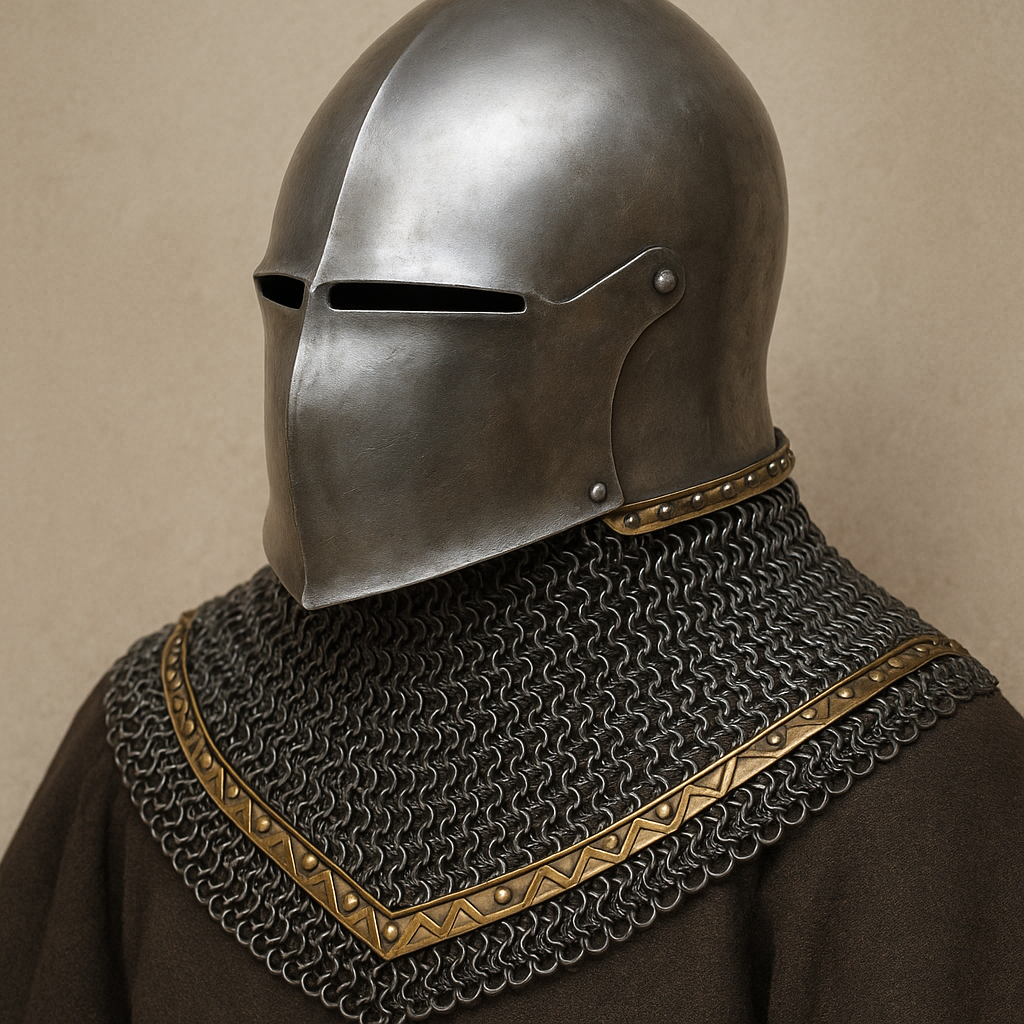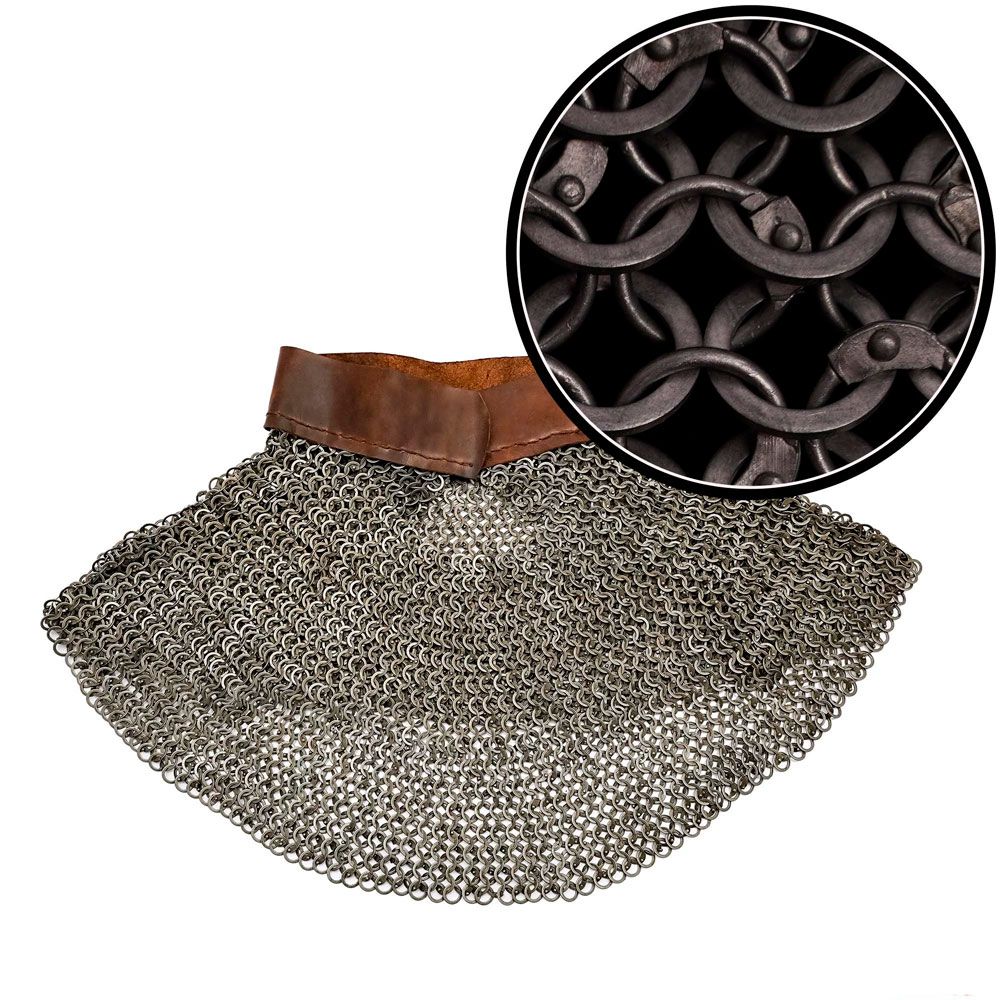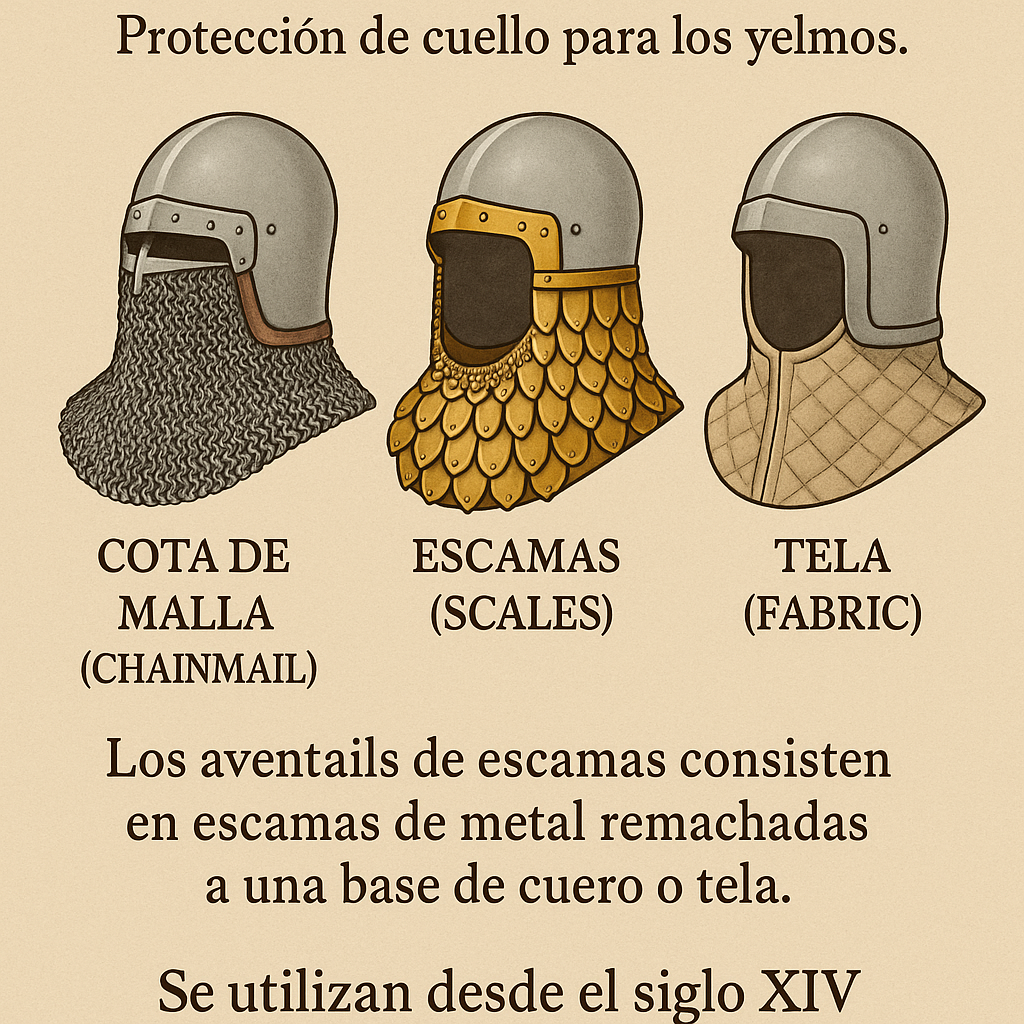What is an Aventail?
The aventail, also known as camail, is a key piece in the history of medieval armor. Its unique design not only provided effective protection but also reflected the ingenuity of medieval technology. This flexible curtain, made of metal mesh, was attached to helmets, known as helmets, to safeguard vital areas such as the neck, throat, shoulders, and sometimes the upper chest.

Origin and Evolution of the Aventail
The term "aventail" is derived from the Arabic "tarás," which means "shield." This defensive piece has a rich history that dates back several centuries in Europe.
Early Appearances
Mesh aventails were integrated into helmets in Northern Europe as early as the 6th century, as demonstrated by archaeological findings from the Vendel Era. Notable examples include the Valsgärde 8 helmet from Sweden and the Coppergate helmet from England. These early aventails varied in design: while the Valsgärde 8 helmet featured an aventail covering the lower face, throat, and neck, the Coppergate helmet combined cheek protectors with a neck aventail.
High Middle Ages
During the High Middle Ages, the aventail experienced innovations, especially in its integration with "spectacle" visors or nasal guards, as seen in various medieval helmets from the Rus and Kievan Rus. Some configurations even allowed for a "ventail," a mobile mesh flap for greater flexibility in combat.
Features and Variants
Aventails came in various configurations:
- Integrated with chainmail: Initially, they were part of the chainmail coif attached to the chainmail shirt, but soon they began to be made as separate pieces.
- One-piece: They completely covered the neck area.
- With flap: Some designs included a flap that attached to the coif to cover the chin.
- Scaled aventail: They offered greater protection compared to simple mesh.
Attachment Systems
The method of attachment to the helmet was crucial for its effectiveness. Holes were drilled in the helmet to pass a leather strap, or special rivets called "vervelles" were used.

Evolution and Challenges of the Aventail
With the arrival of the bascinet in the 14th and 15th centuries, the aventail became an integral part of helm design. This type of helmet underwent several modifications, including taller skulls and sharply pointed profiles that were later softened and rounded.
Transition to Plate Gorget
Around 1350, French bascinets began to be equipped with a hinged jawpiece called a "bevor," which improved protection by shifting the weight of the mesh from the head to the shoulders.
Advantages and Use in Battle
The flexibility of the aventail allowed combatants to move unrestricted, making it popular among medieval warriors. In turn, it provided adequate ventilation and prevented chafing, especially when worn over padded clothing to cushion blows.
However, shortly after 1450, the aventail was mainly replaced by other forms of lighter and more flexible protection, such as the armet and the sallet, marking the decline of its use in battles.

| Type of Aventail | Features |
|---|---|
| Integrated with chainmail | Joint piece with chainmail shirt |
| One-piece | Completely covers the neck |
| With flap | Includes coverage for the chin |
| Scaled aventail | Superior protection with a scaled design |
















